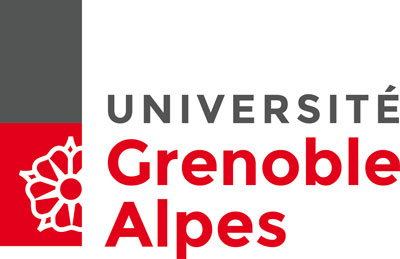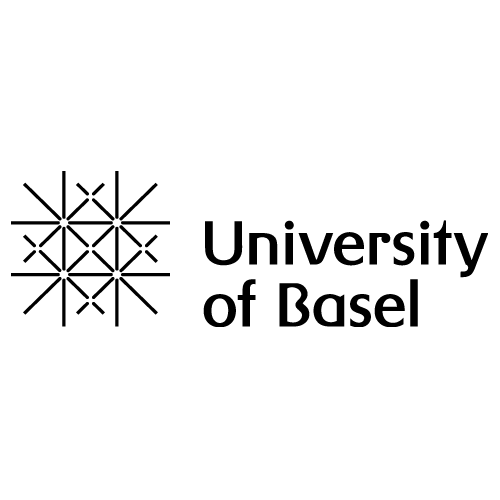Type 1 diabetes is a chronic disease in which the insulin-producing islet cells of the pancreas are attacked by the immune system and destroyed. In the last decades, islet cell transplantation has emerged as a promising treatment option for restoring insulin production and effectively normalizing blood glucose levels. However, despite the tremendous potential of this cell-based therapeutic approach, major limitations, such as the scarce availability of donor insulin-producing cells and the gradual loss of islet graft function due to immune rejection, have significantly impacted on its application in the clinical routine. Advances in cell reprogramming and biomaterial technologies have provided key tools to overcome these barriers.
This symposium will focus on the most recent developments on novel biomaterial designs and encapsulation methods to enable islets or islet-like cells immunoisolation, and to improve their survival and function after transplantation.
BIOMATERIALS AND DEVICES FOR THE TREATMENT OF DIABETES MELLITUS
Chair 1: J. Carlos Rodriguez-Cabello
Chair 2: Eimear B Dolan
García-Arévalo C, M. González-Pérez M, Marcos Herrero Gutierrez M, Rodríguez-Cabello JC
GIR BIOFORGE, Universidad de Valladolid CIBER BBN, Edificio LUCIA, Paseo de Belén 11, 47011, Valladolid, Spain
Synergy between cell biology & engineering and biomaterial design is key to the success of many clinical situations that require both cell survival and restore, reverse, arrest progression or integrate damaged tissues.
Universal requirements for successful biomaterial usage in the body are: biocompatibility, tunable mechanical properties according to the needs or the tissue to which biomaterials are intended, stable physical and chemical properties with the biological systems (or tunable when needed), possibility to be functionalized, high wear resistance or integration capacity.
In the frame of the EU project ELASTISLET, a technology using smart bioengineered biomaterials inspired by elastin – namely Elastin-Like Recombinamers (ELRs) – has been implemented for the development of a physiologically ideal environment for therapeutic intended cells to perform their function.
ELRs meet the essential requirements for biomaterial usage and hold the extraordinary potential to impact on a range of diseases and conditions.
Different ELR-based assemblies, such as injectable hydrogels or fibers, can be easily modulated as regards their mechanical, topological and chemical properties, and ELR-based supports can preserve cell growth both in vitro and in vivo.
Bioproduction, modification, biofunctionalization and characterization of ELRs for various applications in tissue engineering and regenerative medicine will be discussed.
Carmen García-Arévalo is a pharmacist specialized in clinical analysis. She obtained her PhD in Biomedicine program in BIOFORGE group (University of Valladolid) under the supervision of Professor JC Rodriguez-Cabello and FJ Arias Vallejo, where she currently develops her post-doctoral training. In parallel to her investigations, she also help with the coordination´s tasks of the European project ELASTISLET. Her work has mainly focused on the physicochemical and biological characterization of ELRs intended for different biomedical applications, from the common perspective of the biomaterial itself. So far, she has authored 10 papers focusing on elastin-like recombinant proteins as promising multifunctional materials in applications such as nanovaccine development and tissue engineering as well as drug delivery systems.
Oliveira MB1, Martins-Cruz C1, Vilabril S1, Ehlich N2, Ehlich A2, González-Pérez M3, García-Arévalo C3, Rodríguez-Cabello JC3, Mano JF1
1Department of Chemistry, CICECO – Aveiro Institute of Materials. Campus Universitário de Santiago. 3810-193 Aveiro. Portugal; 2Ncardia AG, Nattermannallee 1, 50829 Cologne, Germany; 3GIR BIOFORGE, Universidad de Valladolid CIBER BBN, Edificio LUCIA, Paseo de Belén 11, 47011, Valladolid, Spain
Restoring the lost beta-cell mass by transplanting new, functional, insulin-producing and glucose-responsive cells, has emerged as a promising treatment to treat pancreatic diseases. However, diverse challenging problems related to the procedure have put a brake on its widespread application in the clinical routine.
Innovative strategies are being tested every day to overcome barriers such as the need of huge amounts of islet cells from deceased donors, and of life-long immune-suppressing drugs to prevent the rejection of the transplanted cell mass, to name a few. Transplanting cells – either islet cells or, better, other cells reprogrammed to become insulin-producing cells – by first encapsulating them within smart biomaterials could be an advanced solution to these problems. Current coating systems allow the flow of nutrients and insulin, and provide transplanted cells with protection from immune attacks, but only for a limited period of time, from one to five years, depending on the encapsulation strategy.
To take this cell therapy forward, unlimited sources of cells are needed, along with innovative therapeutic approaches with high biocompatibility, adequate perm-selectivity to warrant immunogenic protection, and capability to promote angiogenesis to improve host-capsule integration.
In the last four years, in the frame of ELASTISLET EU project, we developed a method based on elastin-inspired recombinamers to generate cell/islet niches. Data on the performance of such structures will be presented and discussed.
Mariana Oliveira graduated in Biomedical Engineering from the University of Minho in 2010. She finished her Ph.D. in 2014, in Biomedical Engineering, at the University of Minho (3B’s Research Group - Biomaterials, Biodegradables and Biomimetics), Portugal. During her Ph.D., she developed patterned platforms, based on wettability contrast, for the high-throughput patterning and characterization of biomaterials. From 2015 to 2016, she was a postdoctoral researcher at the 3B’s Research Group, University of Minho, and developed her work on the development of biomaterials targeting stem cells differentiation. Mariana Oliveira is currently a postdoctoral researcher at CICECO – Aveiro Institute of Materials, University of Aveiro. Her research interests include the development of biomaterials targeting stem cell differentiation and tissue regeneration, as well as encapsulation of pancreatic cells for the treatment of diabetes mellitus.
Basta G, Montanucci P, Pescara T, Calafiore R
Laboratory for Cell Transplants and Biohybrid Organs, Department of Medicine, School of Medicine and Surgery, University of Perugia, Perugia, Italy
Replacement of destroyed pancreatic islet beta-cells with functionally competent insulin-secreting cells, may represent the final cure for T1D. Indeed, islet transplantation is currently the most advanced intervention: a successful transplantation restores physiological production of insulin, thus improving quality of life in type 1 diabetes patients. However, despite the success, this procedure has still several limitations. The shortage of islets from donors is one of them.
In the frame of ELASTISLET EU project, an innovative approach has been developed for cell transplantation in diabetes, based on the use of cutting-edge cell-encapsulation technologies and non-islet cells manipulated towards a pancreatic beta-cell fate. ELASTISLET’s strategy entails transplantation of a bioengineered capsule safeguarding a core of insulin-producing cells derived from human induced pluripotent stem cells (hiPSC).
Obtained from adult tissue, hiPSCs committed to differentiation into beta-like cells could provide for virtually unlimited source of insulin producing cells.
Data will be presented and discussed on hiPSCs’ differentiation pathways towards beta-like cells phenotypes, as well as on their capacity to secrete insulin and sense glucose, in vitro and in vivo, in experimental animal models of T1D.
Riccardo Calafiore is an expert in the field of islet and other insulin producing cells, as well as other endocrine cell types transplantation for the cure of type 1 diabetes mellitus. In particular, he has developed pioneering work on artificial membranes (microcapsules) for immunoprotection of the cell grafts with no general, pharmacologic recipient’s immunosuppression.
Tamburrini R1, Asthana A1, Gazia C1, Muir S1, Marino DI1, Chaimov D1, Gallego A2, Migliorini A3, Nostro C3, Cravedi P4, Tomei A5, Orlando G1
1Department of Surgery, Wake Forest University School of Medicine, Winston Salem, USA; 2Nanoimmunotech, Vigo, Spain; 3McEwen Centre for Regenerative Medicine, University Health Network, Toronto, Canada; 4Icahn School of Medicine at Mount Sinai, New York, USA; 5Diabetes Research Institute, University of Miami, Miami, USA
A cellular ECM-based biomaterials are obtained at the cost of a significant loss of critical components of the innate matrisome, which will impair the bioactivity of the end product. In the frame of the BIOCAPAN project (www.biocapan.eu), a novel water-based, detergent-free method was developed to generate ECM-based biomaterials from the human pancreas, to be used to enhance islet function and prolong their lifespan.
Human pancreases were benched in order to obtain 1cm3 cubes pancreatic tissue. Samples were placed in 1-liter jars containing deionized water and shaken at 200rpm for 24 hours at 4°C. Then, they were rinsed with DNAse and a TRIS-EDTA buffer solution containing MgCl before a final wash with deionized water for 24 hours. The so-obtained biomaterial was then frozen, lyophilized and cryomilled, to produce a fine ECM powder that was eventually solubilized with HCl-pepsin solution. The powder’s matrisome was analyzed using mass spectrometry and an ELISA-based multiplex assay. The effects of the powder on cell viability through MTT assays and cell functionality through glucose-stimulated insulin secretion were tested with multiple cell lines including human MSC and murine insulinoma cells (MIN6), and with hESC-derived pancreatic progenitors to determine their capacity to drive cell differentiation. The ECM was also tested with Jurkat Cell line for apoptosis assay, A549 cell for ROS production, hemolysis, coagulation, platelets, complement and lymphocyte activation to assess the safety profile. The immunogenicity of ECM was tested in a Treg induction assay where naïve human CD4+ T cells were cultured with aCD3/aCD28 Ab, IL-2, TGFb +/- ECM.
Human pancreas ECM-based soluble powder can be successfully and consistently obtained with our method. The powder shows the presence of several critical components of the innate matrisome, including multiple types of collagen, which was the most abundant ECM component. A large number of ECM regulators, ECM glycoproteins, ECM affiliated proteins, proteoglycans and secreted factors were also identified. Viability of MIN6 cells cultured as a monolayer was not affected by powder addition independently of its concentration in the culture media, suggesting that the ECM powder was not toxic. MSCs proliferated and grew well in presence of our ECM which was also able to induce higher yields of hESC-derived β-cells. The pancreatic ECM did not show activation of hemolysis, coagulation, platelets or lymphocyte. Finally, ECM did not impair in vitro Treg induction, a major mechanism of immune tolerance.
We have developed a novel, gentler detergent-free method to produce ECM scaffolds from the human pancreas whose composition recapitulates the innate islet niche. Extensive in vitro experiments are undergoing to test the ability of these ECM-based scaffolds to enhance islet function and lifespan in vitro and in vivo.
Carlo Gazia, MD, is a resident in general surgery at the Tor Vergata University of Rome, Italy. He has spent the last 18 months at the Wake Forest University, Winston Salem, USA, to specialize in regenerative medicine technologies applied to beta cell replacement and kidney bioengineering, regeneration and repair under Dr. Giuseppe Orlando’s mentorship.









Grosso A1, Gonzàlez de Torre I2, Herrero M2, Gonzàlez M2, Oliveira MB3, Mano JF3, Rodriguez-Cabello JC2, Di Maggio N1, Banfi A1
1Cell and Gene Therapy, Department of Biomedicine, Basel University Hospital, Basel, Switzerland; 2Bioforge, University of Valladolid, Valladolid, Spain; 3Department of Chemistry, CICECO - Aveiro Institute of Materials,, University of Aveiro, Aveiro, Portugal.
Transplantation of donor-derived pancreatic islets or beta cells has the potential to treat diabetes, but is impaired by poor survival and immune rejection. The ELASTISLET project aims at developing a novel biocompatible encapsulation system, based on functionalized Elastin-Like Recombinamers (ELR), to both attract rapid vascularization and provide immune isolation, in order to achieve long-term viability and function of transplanted islets. Integration and survival of transplanted islets depends on the rapid vascularization of the capsule surface, while avoiding invasion with breakage of the capsule integrity.
To promote vascularization, ELRs were functionalized with a pro-angiogenic peptide. ELR hydrogels were functionalized with increasing concentrations of this peptide. Bulk hydrogels or ELR-coated gelatin microparticles (GMPs) were implanted in vivo and vascular growth was quantified by histological analysis.
Functionalized ELRs were shown to increase vascularization dose-dependently both in bulk and in the form of capsules. This composition could be exploited as an encapsulation strategy in order to improve viability and function of transplanted pancreatic islets or other cell types.
Andrea Grosso graduated in Medical and Pharmaceutical Biotechnology (2015) at the University of Genova (Italy). During his bachelor and master degree internship he studied the biology of bone marrow mesenchymal stem cells and their use for bone tissue engineering in Ranieri Cancedda’s laboratory. In 2016 he moved to Basel (Switzerland), where he started his PhD at the University Hospital in the group of Cell and Gene Therapy directed by Andrea Banfi.
His PhD research focuses on promoting vascularization in regenerative medicine in two main directions: 1) to generate vascularized osteogenic graft and improve bone formation; and 2) to develop a novel encapsulating material for pancreatic islet transplantation in the treatment of diabetes, based on elastin-like recombinamers, to achieve both surface vascularization and immune-protection of the insulin-producing cells, in the context of the EU H2020 project ELASTISLET.
Mann CJ, Iglesias C, Graupera A, Monferrer D, Penon O, Cánovas L, Coderch N
Asphalion S.L., Barcelona, Spain
Advanced therapy medicinal products (ATMPs) are currently experiencing a boom with several products reaching the market and many others under various stages of nonclinical and clinical development for a broad range of conditions. Tissue-engineered products (TEPs) are a promising subclass of ATMPs for regenerative medicine that can potentially address unmet clinical needs. Here we highlight some of the regulatory considerations and complications of developing TEPs and bringing innovative products to market.
To identify several of the most challenging areas of regulatory impact on TEP development we have reviewed guidelines pertinent to both European (EMA), US (FDA) and global (ICH) development of TEPs, the literature and our own experience.
The following aspects were identified as important regulatory considerations for the development of TEPs. Classification: most TEPs are borderline products and correct classification can define which regulatory path a product takes and which studies might be required to support clinical development. Free of charge regulatory procedures exist to formally classify ATMPs. Combination: many TEPs are a combination of cells plus a medical device, such as a scaffold or encapsulation material, for example. As medical devices are regulated differently to medicinal products, correct classification, performance and safety testing may be required whereas different documents may also be required at the time of regulatory submission. Manufacturing: there are many potential regulatory issues associated with manufacture of TEPs including scale-up capacity from laboratory to clinical/commercial scale, pharmaceutical acceptability of materials and excipients including traceability and viral safety. New approaches such as 3D printing are not always clearly covered by legislation or guidelines. Characterization: TEPs, especially those combined with a medical device, may be difficult to characterize once combined, for example, cells once encapsulated or integrated in a scaffold, which creates regulatory challenges for assuring safety and mechanism/performance. Relevant species: many TEPs may be considered as personalized medicines as they use autologous cells as an active substance that complicates the design of nonclinical studies, especially toxicity. Allogeneic cells are preferred from a manufacturing point of view, but are not always feasible. Furthermore, human cells are xenogeneic in mice whereas many scaffolds may also be derived from other animal materials such as pig meaning many studies require immunocompromised animals. Finally, recreating the clinical route of administration in animal models can also be challenge and require regulatory input to assure an adequate design.
As the number of ATMPs and TEPs under development continues to grow and as new technologies are incorporated into their design, more exceptions and challenges to the current regulatory requirements occurs. TEP development can benefit from continuous regulatory input.
Christopher Mann completed his PhD at the University of Western Australia (UWA) in the field gene therapy for Duchenne muscular dystrophy in 2003 and subsequently went on to work as a post-doctoral researcher for 10 years at Kings College London (KCL) in the UK and Universitat Autonoma de Barcelona (UAB) and Universitat Pompeu Fabra (UPF) in Spain in the fields of gene therapy, muscle disease and development, and immunology. Since January 2013 he has been working in regulatory affairs and project management with a focus on biotechnological projects and advanced therapies including working closely with many companies and research groups in establishing translational pathways for early and late stage medicinal product development.




































RODOS PALACE
Iraklidon Avenue (Trianton), Ixia P.O.Box 121, 85100 Rhodes, Greece
Tel: (+30) 22410 97222 Fax: (+30) 22410 25350
E-mail: info@rodos-palace.gr